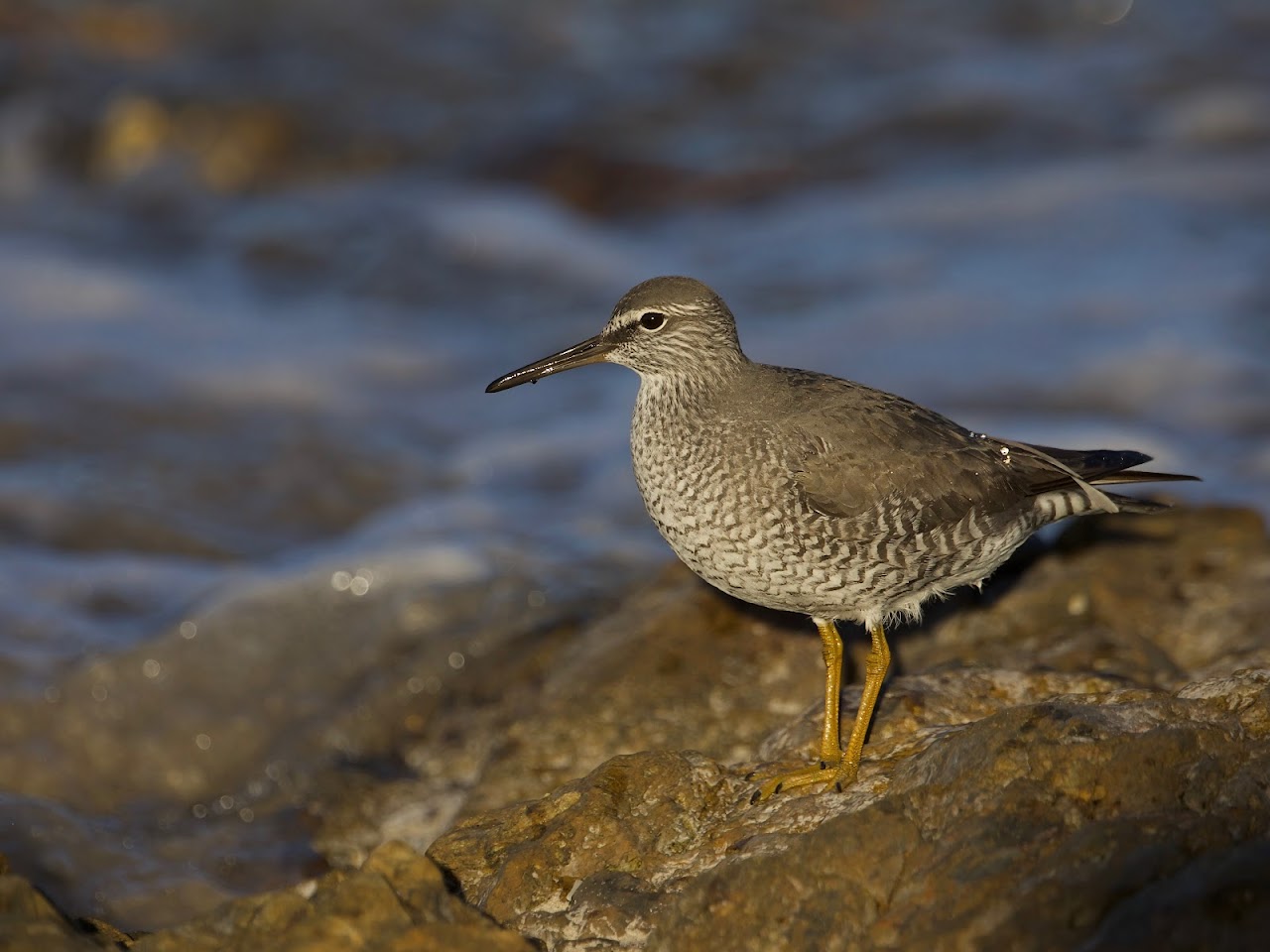The Wandering Tattler (Tringa incana) is a migrant shorebird which breeds in Eastern Siberia, Alaska and NW Canada and migrates over the Pacific basin. Most birds head south down the American west coast with some even reaching Peru in South America.
Others migrate south and west across the vast Pacific Ocean to overwintering island destinations, including islands such as Hawaii and Fiji and, closer to home, the islands of Melanesia, Norfolk Island, Lord Howe Island and New Zealand with some birds reaching the Australian east coast. In Australia they winter on rocky ocean shores and islands in Queensland and NSW with a few rare birds found occasionally along the East Gippsland coast in Victoria. Their common name, Wandering, is derived from the widespread migration of this species.
In Australia they are mostly found in non-breeding plumage or partial breeding plumage when they are hard to differentiate from the Grey-tailed Tattler.
On the 7th of May 2025 I found a solitary Wandering Tattler on the rocky headland of the Brunswick Heads Nature Reserve. I have found this species in this location before – links to two earlier posts are provided at the end of this post – however these birds were in non-breeding or partial breeding plumage whereas the subject of this post was in full breeding condition. Will this bird migrate or over-winter in Australia? Early May seems to be late to migrate?
NOTE: You can left click on any photo to open a slide show of the photos free of text or a right click enables one photo at a time to be opened in a New Tab where an enlarged version can be viewed.
Non-breeding plumage Wandering Tattler (Brunswick Heads July 2021)
Subject Wandering Tattler in breeding plumage May 2025.
Front view.
It was late afternoon and the tide was nearly full, forcing the bird close to shore where it foraged across the rocks in the later afternoon light. I observed the bird from 4 to 4.30pm and took advantage of the ideal photo opportunity with the sun behind me.
The bird expertly avoided breaking waves.
The bird foraged across the rocks picking up and swallowing tiny food items which I could not see.
Wandering Tattlers eat polychaete worms, molluscs and small crabs. In this case I suspect the bird was picking up very small molluscs.
The Australian Bird Guide (Menkhorst et al) points out a number of ID clues to help separate Grey-tailed and Wandering Tattlers including scaling of the tarsi and the nasal groove. However in the field these features are only visible up close. The following photos show both ID clues.
Scaling of tarsi in Wandering is reticulate and in Grey-tails overlapping rectangular.
The nasal groove is longer in the Wandering – about three quarters the length of the bill.
Other ID guides include differing flight calls and as it forages the Wandering often bobs its tail and teeters like a Common Sandpiper.
To finish the post the following is a selection of photos taken as the late afternoon light intensified.
Previous posts referred to above:
July 2021 Non breeding plumage WT
https://avithera.blogspot.com/2021/07/wandering-tattler.html
May 2024 partial breeding plumage WT
https://avithera.blogspot.com/2024/05/wandering-tattler-at-brunswick-heads-nsw.html
In addition here is a link to a post featuring the Grey-tailed Tattler (Tringa brevipes), a closely related species.













